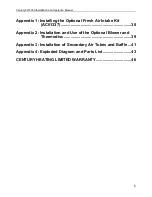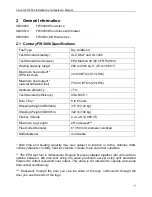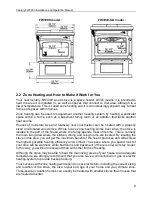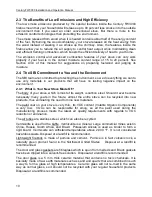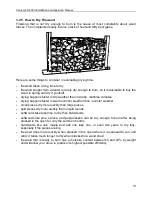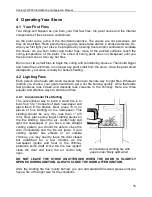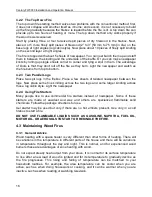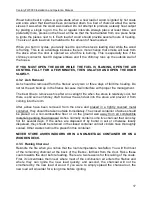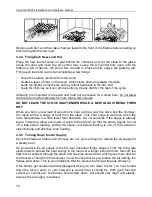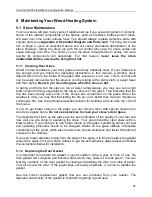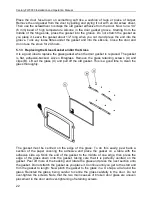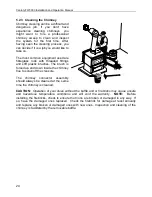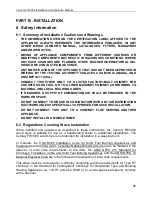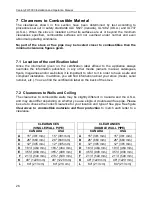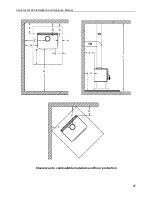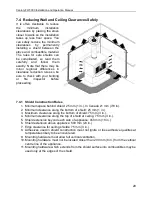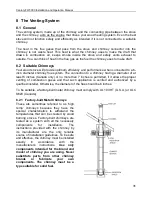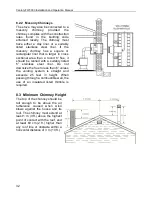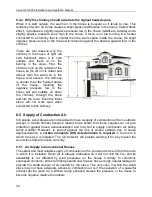
Century FW3000 Installation and Operation Manual
19
4.3.6 Building Different Fires for Different Needs
Using the air control is not the only way to match the stove’s heat output to the heat
demand. Your house will need far less heat in October than in January to be kept at a
comfortable temperature. If you fill the firebox full in fall weather, you will either overheat
the space or turn the stove down so much that the fire will be smoky and inefficient. Here
are some suggestions for building fires to match different heat demand.
4.3.6.1 Small Fires to Take the Chill Off the House
To build a small fire that will produce a low heat output, use small pieces of firewood and
load them crisscross in the firebox. The pieces should be only 3” to 4” in diameter. After
raking the coals, you can lay two pieces parallel to each other corner to corner in the
firebox and lay two more across them in the other direction. Open the air control fully and
only reduce the air after the wood is fully flaming. This kind of fire is good for mild weather
when you are around to tend the stove and should provide enough heat for four hours or
more. Small fires like this are a good time to use softer wood species so there will be less
chance of overheating the house.
4.3.6.2 Long Lasting Low Output Fires
Sometimes you will want to build a fi
re to last up to eight hours, but don’t need intense
heat. In this case use soft wood species and place the logs compactly in the firebox so the
pieces are packed tightly together. You will need to fire the load hot for long enough to fully
char the log surfaces before you can turn the air down. Make sure the fire is flaming
brightly before leaving the fire to burn.
4.3.6.3 High Output Fires for Cold Weather
When the heat demand is high during cold weather, you’ll need a fire that burns steadily
and brightly. This is the time to use your biggest pieces of hardwood fuel if you have it. Put
the biggest pieces at the back of the firebox and place the rest of the pieces compactly. A
densely built fire like this will produce the longest burn your stove is capable of.
You will need to be cautious when building fires like this because if the air is turned down
too much, the fire could smoulder. Make sure the wood is flaming brightly before leaving
the fire to burn.

